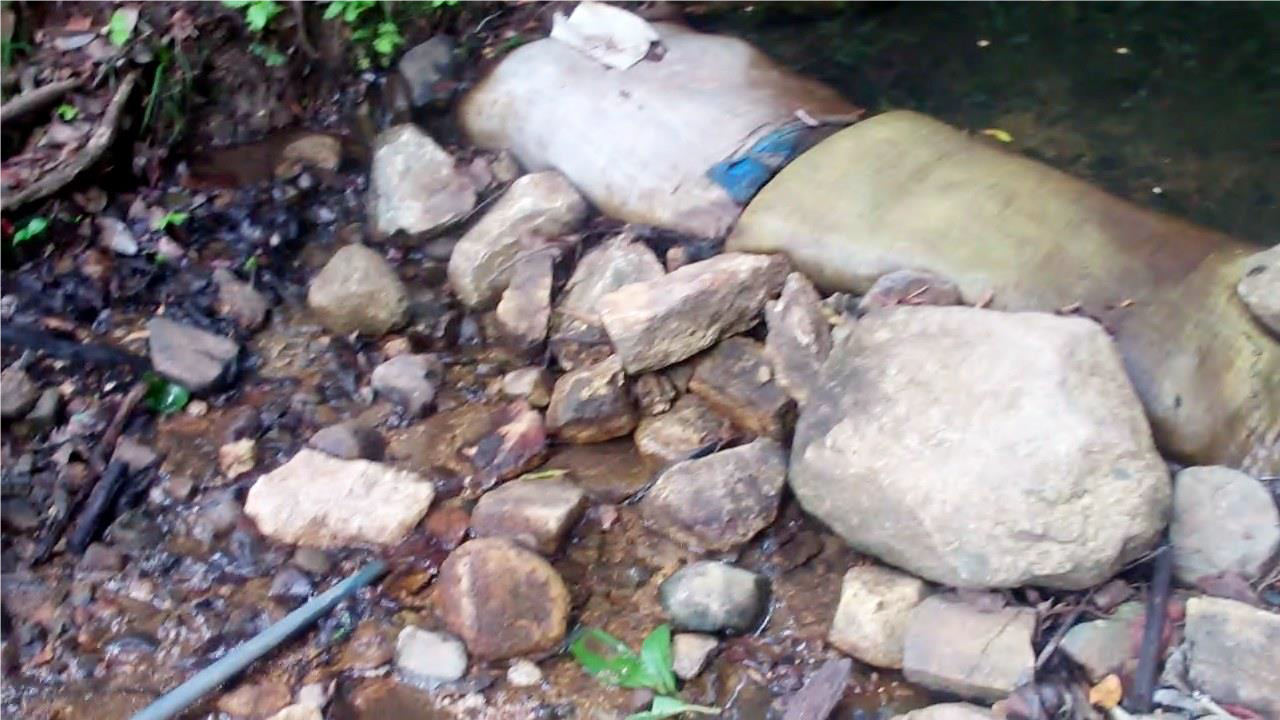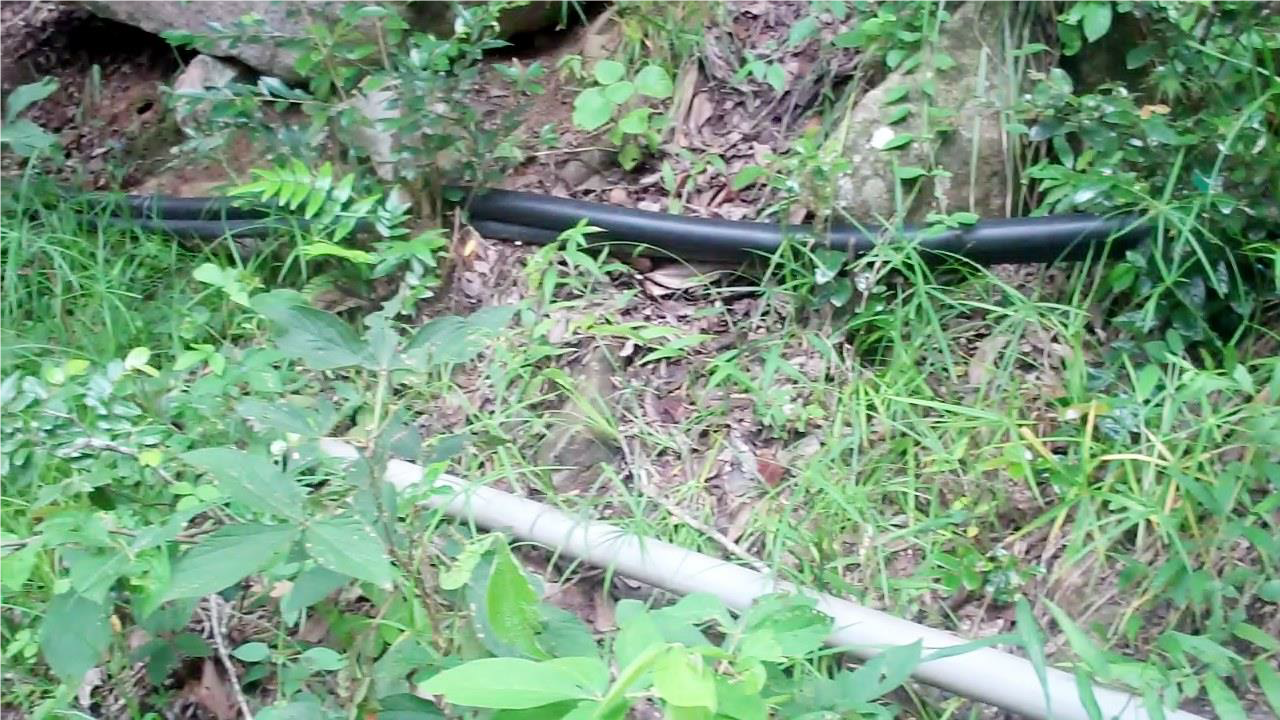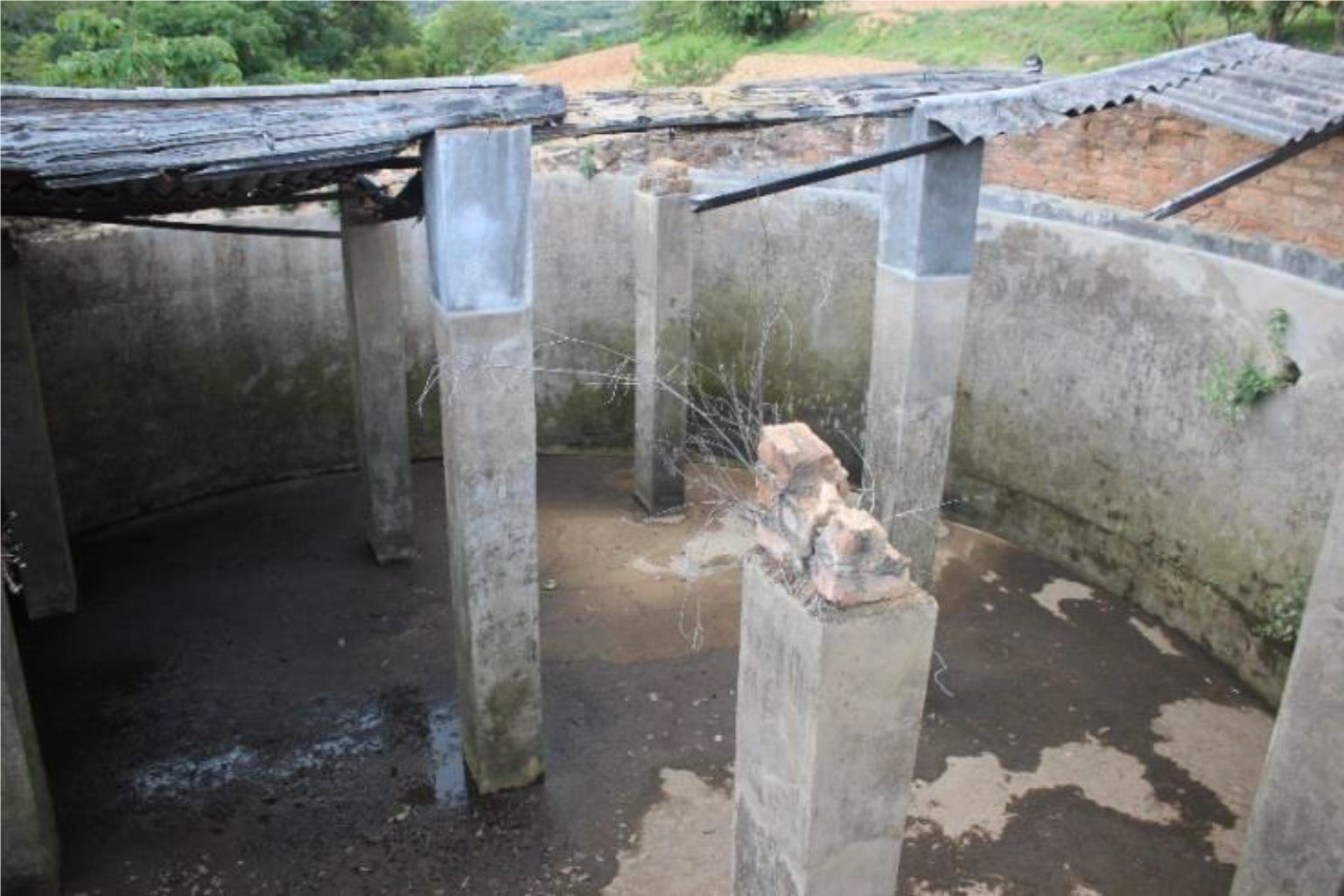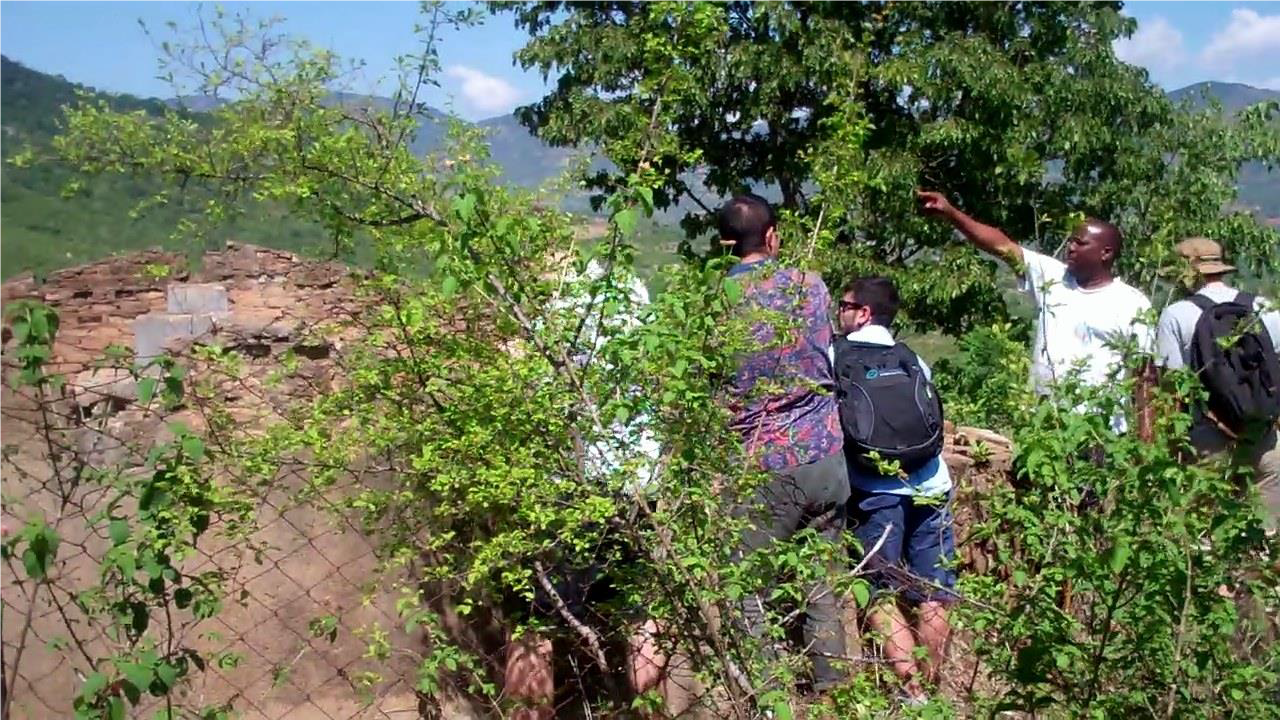
AN ARGUMANTATION
The problem we have is not just water resources harmonization, but about management of the environment and climate change. This, therefore, calls into question the practical side of how we take care of the issue as opposed to just an academic argument. Fortune Development Centre has been appealing for financial assistance in the form of foreign direct investment to help resolve the problem. However, as long as the villagers continue to fight over the depleting water resources from the mountain ranges while waiting for collaboration from foreign investors like Engineers Without Borders of Sweden, the problem won’t vanish. Over the past decade or so, it has been observed that socio-economic development in the area has stagnated. As the population continues to grow, people struggle to ache a living either through small scale business activities or tilling the land for agricultural produce. We have seen an increase in haphazard water-resource usage with villagers forming into groups to tape the depleting water resources from the numerous streams in the area
The permanency and existence of broken pipelines at Ngwende Village similar to this one is a constant reminder of the need for proper management of the environment and climate change. Whether we like it or not, futile efforts to repair such damage to water resource supply, increase the community’s frustrations in bringing harmony to how water resources are managed. The Progress towards the Sustainable Development Goals Report of the UN Secretary General observes that 29% of the global population lack access to safe drinking water, while only 45% use safely managed sanitation facilities. More efficient use and innovative management of water resources are critical to addressing the competing and growing water demands from various industries and users, the threats to water security and the potential risks and scarcity due to climate change.
Conventional solutions are not enough to deal with this mounting stress in the water sector. To achieve the clean water and sanitation goals by 2030, we need to accelerate the implementation of integrated water resources management and the deployment of smart solutions built on circular economic models. That, in turn, requires strong partnerships, technology transfer, exchange of innovative ideas and demonstration of successful case studies.
The dilemma is that we live in a finite world, but behave as if it were inexhaustible. With regard to a sustainable development and our consumer behaviour, the rich countries of the world are, as it were, “developing countries”. The steadily growing consumption is the engine that drives the steady growth of our economies. This, in turn, results in major environmental impacts worldwide and the climate change and is increasingly endangering our natural basis of life and living together on earth
If one were to go through The Global Risk Report 2020 of the World Economic Forum, it can be observed that the five global risks of the coming years that are highest in terms of their likelihood are all environmental:
Waiting for foreign investments without growing our current economy means the risk of socio-economic collapse. At the same time, maintaining growth by drawing water resources haphazardly means the risk of destroying the ecosystems that are our basis of existence. It is incumbent, here, to understand what this ecosystem is. The simplest definition of an ecosystem is that it is a community or group of living organisms that live in and interact with each other in a specific environment. For instance, tropical forests are ecosystems made up of living beings such as trees, plants, animals, insects and micro organisms that are in constant interaction between themselves and that are affected by other physical (sun, temperature) or chemical (oxygen or nutrients) components. Like all other living beings, humans are dependent on natural ecosystem services to survive. We need it to get the food we eat, the water we drink and to transform raw materials into our everyday products. So, in order to keep our living conditions, it’s truly important that we preserve natural ecosystems.
To date, environmental and sustainability policy has far from succeeded in achieving a sufficiently strong reduction in ecological burdens. Environmental management involves all people to some extent because all human activities ultimately have some sort of environmental impact. However, some individuals are more directly involved with resource use, and some special interest groups are particularly concerned with resource exploitation and with issues related to pollution. Environmental management therefore involves many stakeholders and requires a multidisciplinary perspective. It involves many spatial scales, ranging from the local to the global. It also involves many, diverse goals, including the desires to control the direction and pace of development, to optimise resource use, to minimise environmental degradation and to avoid environmental disaster. Environmental management may be practised by individuals and groups holding conflicting and even directly opposing views, as may be the case when environmental managers employed by large multinational corporations come into conflict with environmental managers representing voluntary organisations like Fortune Development Centre.
In general, however, environmental management is concerned with the understanding of the structure and function of the earth system, as well as of the ways in which humans relate to their environment. Environmental management is therefore concerned with the description and monitoring of environmental changes, with predicting future changes and with attempts to maximise human benefit and to minimise environmental degradation due to human activities. Yet, characteristically, environmental management is about decision making and it is especially concerned with the process of decision making in relation to the use of natural resources, the pollution of habitats and the modification of ecosystems. Fundamentally, then, environmental management is a political activity because those decisions about resources, pollution and ecosystems are never neutral or objective; on the contrary, they are value laden and they reflect the exercise of power by particular groups over others.
Moreover, in general, it is naïve to conceive of environmental management as being about simply “the management of the environment” in the sense of humans manipulating and controlling the components and processes of the earth system. Of course, humans do exert such influences on the earth system; but it is a fallacy to think that humans “manage”, for instance, populations of elephants. Instead, it is more accurate to suggest that humans may be able to make some progress towards managing human impacts on elephants. Ultimately, then, environmental management is more concerned with the management of human activities and their impacts than with the management of the natural environment per se. Being multifaceted, environmental management is about predicting future environmental changes, maximizing human benefit whilst minimizing environmental degradation.
After having pointed that out, some types of activity are common to environmental managers. Environmental managers attempt deliberately to steer the process of development in order to take advantage of opportunities; they attempt to ensure that critical environmental limits are not exceeded; they work to reduce and mitigate environmental issues; and they are concerned with increasing the adaptability and resilience of human societies in the face of environmental change, variability, unpredictability and hazards. A further definition might suggest that environmental management is concerned with meeting and improving provision for human needs and demands on a sustainable basis with minimal damage to natural habitats and ecosystems.
The linkage between our economy and the environment means that ecological threats, such as pollution, overexploitation, habitat loss, and climate change, also impose economic risks. Therefore, the continuing impressive development of prosperity has not been able to slow down climate change, resource consumption or the loss of biodiversity on the contrary all these pressures have increased massively. Climate change is one of the most threatening consequences of the pursuit of everlasting economic growth. Scientific research throughout the past decades has demonstrated how climatic changes have important impacts on the livelihoods of people around the world. For most of developing countries, their level of structural and social vulnerability are a dangerous combination and a formula for impacts of higher magnitude. Therefore, climatic phenomenon such as tropical storms, floods and droughts, more often become tragedies in these countries.
In Honde Valley, mitigation efforts should not focus on the energy or transport sector only, but on agriculture and forestry as well. Agriculture is responsible for a relatively large percentage of the emissions in many developing countries. In this sector there are many win win options both reducing poverty and reducing greenhouse gas emissions. For example, improved water and nutrient management can sharply increase production efficiency and reduces at least the amount of emissions per kg food produced. Agro-forestry reduces greenhouse gas emission through increased carbon storage and reduces poverty through diversifying the incomes of local communities.
It is interesting to note that land use change linked to massive expansion of globalized, highly commercialized industrial agriculture is the main overarching driver of declining agrobiodiversity. Globally, the FAO estimates that 75% of crop diversity was lost in the 20th century. Historically about 7,000 plant species were cultivated for food, today only about 80 plant species make major contributions to food supplies at the global level. In fact, half of all plant based calories come from only three species rice, maize, and wheat. And 93% of global meat supplies come from just four animal species pigs, poultry, cattle, and buffalo.
Looking ahead, restoring agrobiodiversity the richness of what we cultivate, breed, consume, and conserve in the wild is crucial to ensure resilient food systems against the backdrop of climate change.
Deforestation is on the increase and is said to be currently responsible for between 15-25% of global carbon emissions. By designing appropriate development policies and by actively supporting incentives for forest conservation through alternative energy sources, a lot could be achieved to reduce deforestation. In Honde Valley, villagers cut trees for firewood and traditional manufacturing of clay bricks with reckless abandon. There is an urgent need to educate them on the perils of deforestation.
Covid-19 has demonstrated that the foundations of prosperity are precarious. Disasters long talked about, and long ignored, can come upon us with no warning, turning life inside out and shaking all that seemed stable. The harm from climate change will be slower than the pandemic but more massive and longer-lasting. If there is a moment for leaders to show bravery in heading off that disaster, this is it. They will never have a more attentive audience. Stimulating development and reducing poverty will increase the adaptive capacity of people and is likely to make them less vulnerable to climate change. In general, adaptation should be an extension of sustainable development and as such it should focus on:
Besides adaptation to climate change, there are also many immediate benefits in improving the management of current climate variability in developing countries. Many poor countries are confronted with highly variable rainfall but very few systems are in place to manage this variability and prepare for the next drought and/or flood.
Therefore, we have to move towards a sustainable life, even if there is no master plan on how to achieve the transformation of our present society with its perpetual expansion towards sustainable development. We must move from the deeply internalized attitude of competition and self interest to a basic attitude of cooperation and common good, if for example, we really want to improve management of the environment and to curb global climate change
Water resource management is a very important subject of discussion in this agricultural communal community and yet increasing competition for water among villagers is degrading the natural resources on which they rely. Fortune DC’s survey revealed that villagers mostly in the Matingo, Ngwende and Manyonho socio economic development zones have laid small pipelines drawn haphazardly direct from the streams.


A section showing a couple of individual pipeline connections from streams
Read More
The data/information being synthesized shows that the water-resources distribution infrastructure needs rehabilitation and new tanks and pipelines are also needed in those communities where piped water is still inaccessible. With the help of donors from Sweden, Fortune DC in collaboration with the Zimbabwe National Water Authority (ZINWA) has initiated the harmonization of water resources in Ward 10. The objective is to harness and manage water resources for both domestic consumption and irrigation.
Read More
Recommendation by the KIC InnoEnergy funded study of June 2017 envisages pumping water from Pachisipiti (some 300 metres) up to the Chikuhwa (derelict) Tank (See Photo 1 on p. 6). With further foresight in the ICT pacesetting development and its relevance in socio economic development, it is recommended that the derelict tank be demolished and in its place design a contemporary tank with an ICT tower to cater for Internet connectivity as the sprawling Samaringa institution lacks equipment and facilities. 6 The enlarged Chikuhwa Water Tank should be able to supply water to both Ngwende and Mutetwa households. In addition, it will supply water to Masere Business Centre and Fortune DC’s envisaged carpentry factory and motor mechanic workshop. Consideration should also be made for the Honde Technical College and the Honde Mission Clinic with an average of 15 outpatients per day which are situated in the Ngwende socio economic development zone.
Read MoreFurthermore, envisaged construction of chalets on Fortune DC’s plot to cater for social tourism should be considered. Because the Ngwende Socio-economic Development Zone is the hub of Ward 10, it should be given priority. An enlarged Chikuhwa Water Tank would bring the following benefits:

With Engineers Without Borders Sweden and Sweco’s expertise, it is feasible and more prudent, from the point of economic development, to reduce the number of tanks needing construction by increasing tank capacities that would supply combined households in the valley below. Ward 10 is situated in a unique geographical landscape with a range of mountains and several hills spreading down into the valley. There is no need for electricity saving on costs for ZESA to pump the water to the households as this is by gravity.
Read MoreThe challenge faced by humanity is one of balance, equity and sustainability: how to meet present-day competing demands for freshwater, with the need to maintain healthy ecosystems that will safeguard freshwater resources and biodiversity for future generations. We, the inhabitants of Ward 10 in Honde Valley, are cognizant of the fact that the Industrial Revolution in Europe was something more than just new machines and smoke belching factories. It was a revolution which transformed society down to its very roots with employment creation and increased productivity assuring the development of the technology and skills needed to put material investments to the best use.
Opportunities for Sustainable Community Development in Honde Valley proposes the creation of an agricultural cooperative. As agriculture is the main economic activity, this would mean:
Fortune DC has already created an agricultural consortium as presented in the Ward 10 CDC Structure provided for Engineers Without Borders’ overall information and sustainable community development in the area.